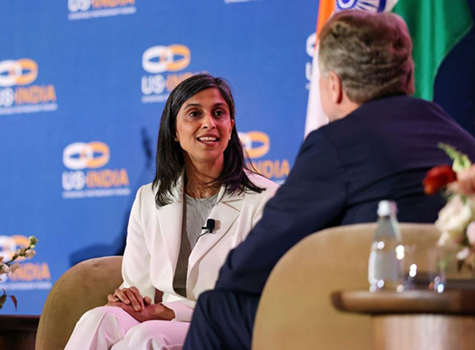
February is the month for Heart Awareness and Valentine’s Day. So we will learn some facts about our hearts and chocolate!
Heart Health
Your heart is about the size of your two hands clasped together. It beats 100,000 times per day. The beating sound is the clap of valve leaflets opening and closing. Your heart is one giant pump. Every minute, your heart pumps about five quarts (1.5 liters) of blood through a system of 60,000 miles of blood vessels! The right side of the heart pumps blood into your lungs, while the left side pumps it back into your body. A woman’s average heartbeat is faster than a man’s by almost eight beats a minute. Age and fitness level affect your heart rate; as children grow or adults get fitter, the heart rate gets slower. The heart has its own electrical supply and will continue to beat when separated from the body. Every cell in the body gets blood from the heart, except for the corneas. So our heart is the hardest working muscle in our body, and it is most critical to keep it healthy.
People from South Asia—India, Pakistan, Bangladesh, Nepal, Bhutan, Maldives and Sri Lanka—have a four times greater risk of heart disease than the general population and have a much greater chance of having a heart attack before age 50. The risk is made worse by the fact that South Asians also have a greater degree of insulin resistance, a pre-diabetic condition in which the body does not process insulin efficiently. South Asians are also more likely to have high triglycerides and low HDL (the good cholesterol). A variant of HDL known as HDL2b, which is thought to mediate the good effects of HDL, is low in as many as 93 percent of South Asian men and 63 percent of women. Additionally, the Body mass index (BMI) in South Asians often falls into a thin-fat syndrome. People may have an acceptable BMI, but they also carry more of their weight in their abdomen. This accumulation of visceral fat increases other risk factors making this population more prone to having heart disease.
Health benefits of Cacao
Moving on to the more pleasant topic of chocolate!
Cacao is a true superfood! It is a naturally rich source of antioxidants and dietary fiber. It is considered to be one of the highest sources of flavonoids and polyphenols. Cacao is also rich in minerals such as magnesium, iron, copper, potassium, calcium, and zinc. Cacao is also an excellent source of fiber. The fat present in raw cacao is monounsaturated, similar to olive oil and avocado. The nutrients present in raw cacao can help lower risk of diabetes, maintain healthy blood pressure, strong bones, lower risk of cardiovascular disease, and improve health of the nerves. Flavonoids are a class of antioxidants that are abundant in both cacao and cocoa powder. Flavonoids inhibit pro-inflammatory enzymes in the body, meaning that they have a widespread anti-inflammatory effect. Additionally, flavonoids have been associated with higher levels of “healthy” HDL cholesterol and better overall cardiovascular health. Cacao contains phenyl ethylamine (PEA), which is associated with elevated mood and higher energy levels.
Cacao or Cocoa?
The health benefits of chocolate have been known for centuries and proven with various research studies. But all chocolate is not the same. Let us learn about which type of chocolate actually has health benefits.
Cacao
The cacao bean is the seed of the fruit of the cacao tree. This tropical tree, native to South America, grows in wet lowlands. Its thick trunk has large, leathery leaves and small, pinkish flowers on the branches and trunk, followed by the fruit, or pods. Each pod yields about 20-40 seeds or cacao beans.
Raw Nibs and Cacao Powder
After harvesting the cacao bean, it is dried. It is very rare to find a whole cacao bean in the market. Usually the beans are cracked and shelled and sold as cacao nibs. The nibs are also ground and sold as cacao powder. This raw powder has all the benefits of the whole cacao bean. Cacao powder is very versatile and can be added to a variety of recipes.
Cocoa Liquor
Cocoa liquor is a paste made from ground, roasted fermented cacao beans. This is what is used in making chocolate bars.
Cocoa Butter
Cocoa butter is the fat that remains after cocoa solids have been removed from cocoa liquor. It is 100 percent fat and is used in a variety of products in food and cosmetics.
Cocoa Powder
Cocoa powder consists of the cocoa solids left after the cocoa butter is removed from the liquor. It is the most commonly available form of cacao. It is low in fat and still contains some of the nutrients present in the cacao bean.
Chocolate Bars
Chocolate bars are made by mixing cocoa liquor with cocoa butter. Other ingredients such as sugar, milk, nuts and spices are added for flavor and taste.
Dark Chocolate
The darkness of chocolate depends on the quantity of cocoa liquor present. Studies show that to really get the benefits of the phytochemicals and antioxidants present in chocolate, look for 70 percent or higher content.
Baking Chocolate
Also known as semi-sweet or bittersweet chocolate, baking chocolate bars typically contain about 35 percent cocoa liquor.
Milk Chocolate
Milk chocolate is a mixture of chocolate plus condensed milk or powdered milk and sweeteners. It only contains less than 10 percent cocoa liquor. Plus it has extra sugar, fat, and artificial ingredients. This is your average candy bar.
White Chocolate
White chocolate has no cocoa and so does not have any health benefits. It mostly contains cocoa butter mixed with sweeteners and dairy ingredients.
To summarize, choose your chocolate wisely. It may just help your heart!
For further information about diet and how to keep your heart healthy, access past articles on the Saathee website:
Heart Health: saathee.com/post_valentines-heart-health
Fats Part I: saathee.com/post_fats-good-bad-ugly
Fats Part II: saathee.com/post_fats-ii-cholesterol-heart-health
———-
Parul Kharod, MS, RD, LDN is a registered dietitian and licensed nutritionist and works as a Clinical Dietitian with Outpatient Nutrition Services at WakeMed Hospital in Cary and Raleigh. She can be reached at parulkharod@gmail.com
Posted: Monday, February 18, 2019



